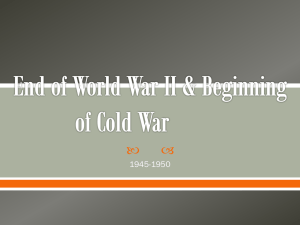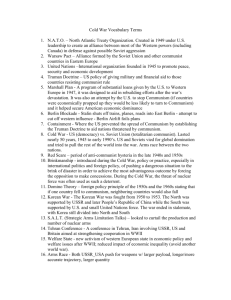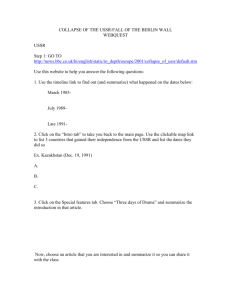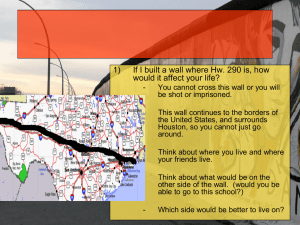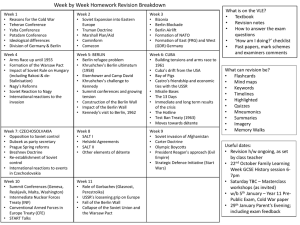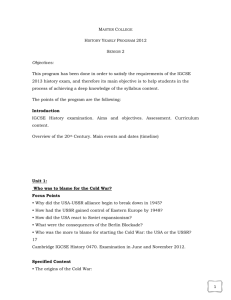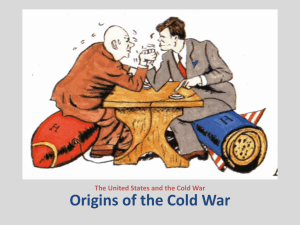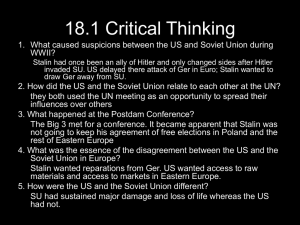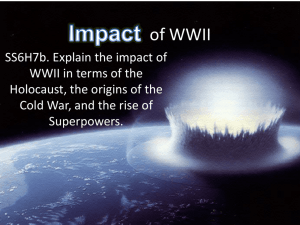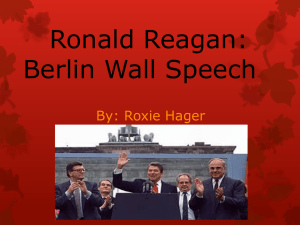Cold War Intro
advertisement
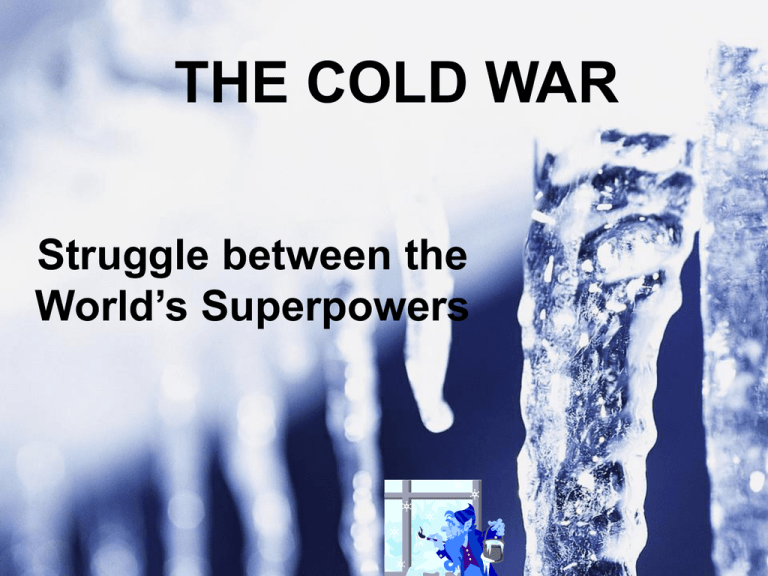
THE COLD WAR Struggle between the World’s Superpowers Think About It… • What is the difference between a “hot” war and a “cold” war? • It has nothing to do with weather! – A “hot” war/conflict: when there is actual fighting going – A “cold” war/conflict: when there is great tension and the potential for war, but no direct fighting yet What was THE “Cold War”? • 46 years (1946-1991)of tense relations between world’s superpowers after WWII • Tension existed between the communist USSR (& its allies) and the democratic USA(& its allies) to control and influence the rest of the world West v. East • The two powers never directly fought each other, so the conflict was not “hot” But there were other world conflicts… We’ll talk about those later! 1945 – The Division of Germany • After WWII, the Allies (US, Britain, France and the Soviet Union) split Germany into 4 military occupation zones • Berlin was also split into four zones even though the city was entirely in the Soviet occupied zone The Berlin Crisis(June 1948-May 1949) • • Germany? I’m glad you asked…………………… • The USSR refused to give up their Zone, and this would divide Germany into East and West. The city of Berlin was divided 4 ways too. When the Soviets closed off their section, the US had to Fly in all the supplies and needs of the people. This is the Berlin Airlift. • For 11 months, 277,000 flights brought in 2.3 tons of supplies. • The west wanted the east to rejoin, but Stalin feared it would hurt Soviet security. • In June 1948, Stalin decided to try to gain control of West Berlin which was deep inside the eastern sector. • Stalin cut off road, rail and canal links with West Berlin, hoping to starve it into submission. • The west responded by airlifting in the necessary supplies to allow west Berlin to survive. • In May 1949, Russia admitted defeat and lifted the blockade.* Berlin Blockade & Airlift (1948-49) Soviet Goals After WWII • To prevent future attacks from the Germans by creating a “buffer zone” (protective area) • To spread communism around Europe and the world • Think geographically… How can the USSR accomplish both goals? The “Eastern Bloc” • Countries of eastern Europe that were put under the Soviet “sphere of influence” • Including: Eastern Germany, Poland, Czechoslovakia, Yugoslavia, Romania, Bulgaria and Hungary • USSR forced these countries to become communist after WWII Sphere of Influence When a strong nation exerts its control or influence over a weaker nation or region Eastern Bloc Iron Curtain – A term used by Winston Churchill to describe the separating of Those communist lands of East Europe from the West. The “Iron” Curtain • Name coined by British Prime Minister Winston Churchill in 1946 • Referred to the ideological division in Europe after WWII between the eastern communist countries dominated by the Soviet Union and the Allied western democratic countries Why call the division iron? Churchill's Iron Curtain Speech THE BERLIN WALL Berlin Wall-1961 The Berlin Wall Goes Up (1961) Checkpoint Charlie Berlin is cut in half. The wall surrounds the city, and both protects and locks in members of the city Brandenberg Gate and Checkpoint Charlie Ich bin ein Berliner! (1963) President Kennedy tells Berliners that the West is with them!
